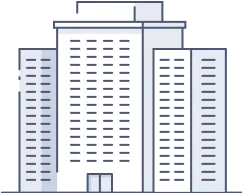Possibly Your Last Chance to Get a PPP Loan

Is March 31, 2021 Crucial to Your Business?
If your business has suffered during the pandemic and you haven’t yet applied for a PPP loan, it could be the answer you’ve been looking for. There’s no denying that COVID-19 has taken its toll on millions of businesses over the past year. Luckily there is a way to mitigate your revenue losses, staff reductions and lost production. That’s with PPP Loans.
In 2020, Congress passed the CARES Act, which amongst other programs made $659 billion available to small businesses in loans under the Paycheck Protection Program (PPP) These loans helped small businesses continue to meet their payrolls under COVID-19 restrictions and were available until August of 2020. Yet the pandemic and its restrictions continued on, and many businesses struggled more and more as their PPP funds dried up.
In December of 2020, Congress allocated another 285 billion for a second round of PPP loans (PPP2). Funds from PPP2 Loans remain available through the end of March or until funds are depleted.
If qualified, your business can receive up to 3.5 times your monthly payroll costs.
What Are Your Limits? What Is the Maximum You Can Receive?
- Businesses within a corporate group: $20 million maximum loan
amount - For businesses that are drawing a second time: $2 million, and a
maximum aggregate total of both first and second draws of $10
million.
Do You Qualify?
Those businesses that have been hardest hit will likely qualify for the full 3.5 times their payroll amount in Round 2. In fact, special provisions were made to ensure these groups receive funds in this second round.
If you are in any one of these categories, then you should qualify. If you are not, then you’ll still be able to apply to receive up to 2.5 times your average monthly payroll costs.
Qualifying Groups
- Businesses with a NAICS code starting with “72”. These groups can
apply for 3.5 times their monthly payroll costs on their Second Draw.
This group includes several types of businesses in the food, beverage
or accommodation categories. - Companies in the entertainment, live event or production sector that
have been forced to close may also be eligible for a special grant. - BIPOC-owned (Black, Indigenous, people of color) businesses.
Congress has earmarked 12 billion specifically for this category.
First Time Borrowers
These are the qualifications borrowers must meet if they are borrowing for the first time. It is advisable to seek the advice of a financial advisor to ensure you meet all the requirements that pertain to you/your business.
- Your business was already in operation as of February 15, 2020.
- Your small business or nonprofit business has payroll costs.
- You have employed people that you paid out salaries and payroll
taxes. - You have less than 501 employees.
- You are a sole proprietor, freelancer, independent contractor, or selfemployed
individual. - You are a business partner. Note, limited partnerships, only one PPP
application can be submitted per partnership. - You certify that your business has sustained economic damage due
to the COVID-19 pandemic.
Second Draws
Technically, you can only get one PPP loan, thus if you received a loan in the first round, you can’t get a second loan, BUT you can get a second draw.
You simply apply for additional funding under the first PPP loan. Seek the advice of a financial advisor so you get this done correctly.
To qualify for a second draw you’ll need to meet these requirements:
- You have fewer than 300 employees.
- You have reduced revenue of 25% during any quarter of 2020 when
compared to the same quarter for 2019.
PPP Loans Are Partially or Fully Forgivable
Originally, business owners could get their loans partially or fully forgiven providing they spent their funds on payroll costs, rent, mortgage interest payments and utilities.
In Round 2, the categories have been expanded to include a few new ones:
- Certain Supplier Costs
- Additional Operations Expenditures
- Some Property Damage Costs.
- COVID-19 Worker Protection costs
To find out if you qualify, consider talking to your lender or reaching out to a financial advisor, but do it quickly as March 31 is coming up quickly.
PPP Loans Are Not Taxable at the Federal Level
The CARES Act was quite clear that PPP loan funds would not be counted as taxable income, however there are some states that are taxing them. There was also some initial confusion as to whether or not expenditures paid through PPP loan funds were tax deductible, but this was cleared up in the Economic Aid Act. Expenses paid with PPP loan funds are tax deductible.
How Are PPP Loans Approved?
PPP2 Loans are approved through the SBA but funded by private lenders. The SBA normally has a rapid approval process, but there can be delays in funding due to the sheer number of loan applications. As well, it is possible for the SBA to approve you, and a lender to disapprove you.
If you should decide to apply it is advisable to work with a financial advisor so that the process goes smoothly because there’s a lot going on behind the scenes to get the funds to you.
Will There Be a PPP3?
It is not known at this time if there will be another round of PPP loans as the focus now is to get the vaccines widely available and people back to work, with businesses able to reopen or go back up to full capacity. This may very well be your last chance to access these forgivable and federal tax free loans!
Qualifying and applying go smoothly if you’re working with a good financial advisor or lender. You should find out if PPP funding is a resource for your business while you still can.





